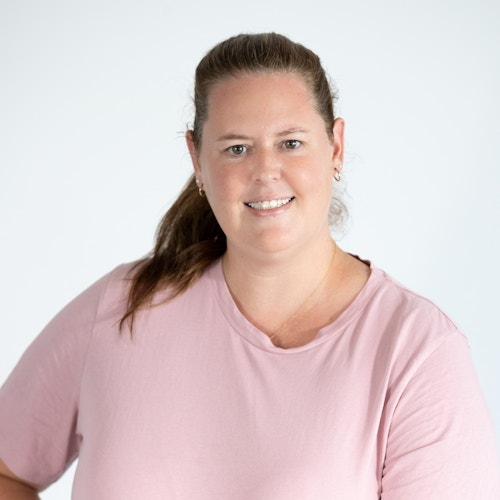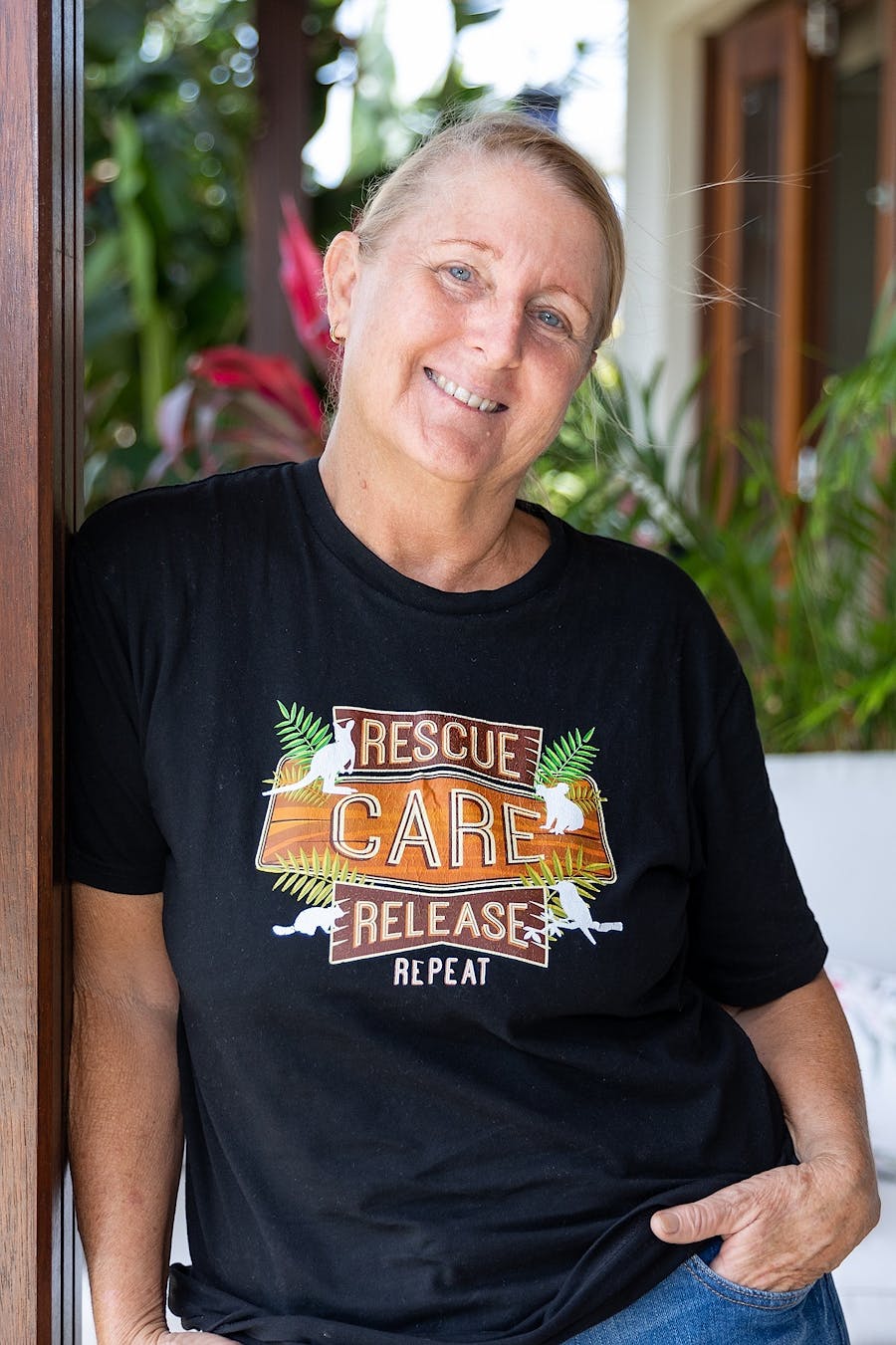
Meet the passionate carers saving native wildlife
Published 6:00am 25 February 2024

 Words by Ashleigh Howarth
Words by Ashleigh Howarth
Thousands of sick, injured and orphaned animals on Bribie Island have been given a second chance at life thanks to caring people such as Reyna Watson and Colleen Ogilvie.
The two friends, along with other active members on the island, volunteer their time with Wildlife Rescue Queensland, a not-for-profit organisation specialising in the rescue, rehabilitation and release of native Australian wildlife.
As a bird carer, Reyna’s home has become a refuge for baby chicks and other feathered friends that need some extra love and care before being released back into the wild.
It’s a role she finds extremely rewarding.
“Being a wildlife carer is a wonderful way to give back - it’s very fulfilling,” Reyna says.
“My days are busy with feeding the birds, weighing them, reporting on their progress, cleaning their enclosures, washing towels and driving to pick up other injured birds when calls come in from people out in the community.
“Baby birds require regular feeding, and since I am retired from teaching, I have that free time where I can be at home and care for them.
“I want them to get bigger and healthier so they can be returned to their natural habitat.
“When I do release them back to their native home, it’s a wonderful feeling knowing I have helped make a difference in protecting the natural world around me.”
During the last two years Reyna has cared for ducklings, noisy miners, blue-faced honeyeaters, figbirds, and even a baby ibis.
“When I got the baby ibis it weighed 225g, but after learning how to feed it as its parents would, it soon weighed more than one kilogram,” Reyna says.
“I care for lots of babies, especially during trauma season, which runs from September to February.
“The baby birds can fall out of the nest when they are learning to fly, or the other birds kick it out.
“If you see a baby bird on the ground, have a look to see if the parents are still around and feeding it.
“If the bird isn’t being cared for by its parents, that’s when you should call a wildlife carer.”

Colleen’s role with Wildlife Rescue Queensland is a little different. Not only does she help with memberships, but she also does a lot of work behind the scenes, including answering the hotline and responding to reports of injured wildlife.
Knowing time is of the essence with an injured animal, Colleen (pictured above) is urging residents to save the phone number for Wildlife Rescue Queensland into their phone.
“It’s really important when someone either hits or sees an injured animal on the side of the road they call us immediately so we can get a member out there to help the animal or do a pouch check for babies,” Colleen says.
“Too often I see posts on Facebook asking if anyone knows a wildlife carer, but by the time the information comes through to us it can sometimes be too late to help that animal or any babies that may be in a pouch,” Colleen says.
“Wildlife Rescue Queensland is a dedicated organisation here to service all of Moreton Bay, from the coast to the hinterland, as well as the surrounding regions.
“We can care for animals like birds, owls, ringtail possums, brushtail possums, wallabies, koalas, echidnas, kangaroos, platypus, frogs, snakes, turtles and many more native species.
“All rescued wildlife gets an assessment at either the Australia Zoo Wildlife Hospital, RSPCA or a qualified vet. Once assessed and a treatment plan is in place, it will then be allocated to a relevant qualified carer until it is then ready for release back into the wild.
“You can help us help protect these beautiful animals.”
To see more photos, click through the gallery below.








































































































Urgent call for more volunteers
With more animals finding themselves subject to a world of cars, domestic animals and other risks, Wildlife Rescue Queensland is always on the lookout for more volunteers.
In addition to attending callouts at all hours of the day, Colleen helps run information and induction nights for those interested in joining the organisation.
“We try to do at least one information session a month where members of the public can come and find out more about Wildlife Rescue Queensland and what we do to help our wildlife in need,” Colleen says.
“Here we will talk about the different animals we help, the kind of rescues we do, and explain what is needed in a rescue pack.
“People can learn the best and simplest ways to rescue different wildlife species, and if they wish, they can go on to do other training to become a carer.
“There is no obligation to join, but if this is something you would like to be a part of, we really need you to be an active member.
“We tell people please do not join unless you can do a rescue or a transport within the first two weeks of joining.
“We need our members to be active for our wildlife because they are our priority and desperately need us.
“Everything you need to know about our upcoming information nights can be found on our Facebook page.”
Information nights will be held on Wednesday, March 6 and Wednesday, May 1 from 5.30-8.30pm in an education room at Katrina’s School of Hair and Beauty, located at 4/12 Leda Blvd, Morayfield.
Other ways you can help Wildlife Rescue Queensland include administration duties, answering the hotline, being a wildlife ambulance driver (vehicle provided), assisting with fundraising initiatives, collecting native plant cuttings, sewing animal pouches and building wooden possum boxes.
For more information, visit the website or like Wildlife Rescue Queensland on Facebook.
Quick facts
• Wildlife Rescue Queensland has been operating in Moreton Bay since 2007
• It was previously known as Bribie and Districts Wildlife Rescue
• If you find a sick or injured animal, phone the 24-hour hotline on 0478 901 801
Related Stories
Top Stories


